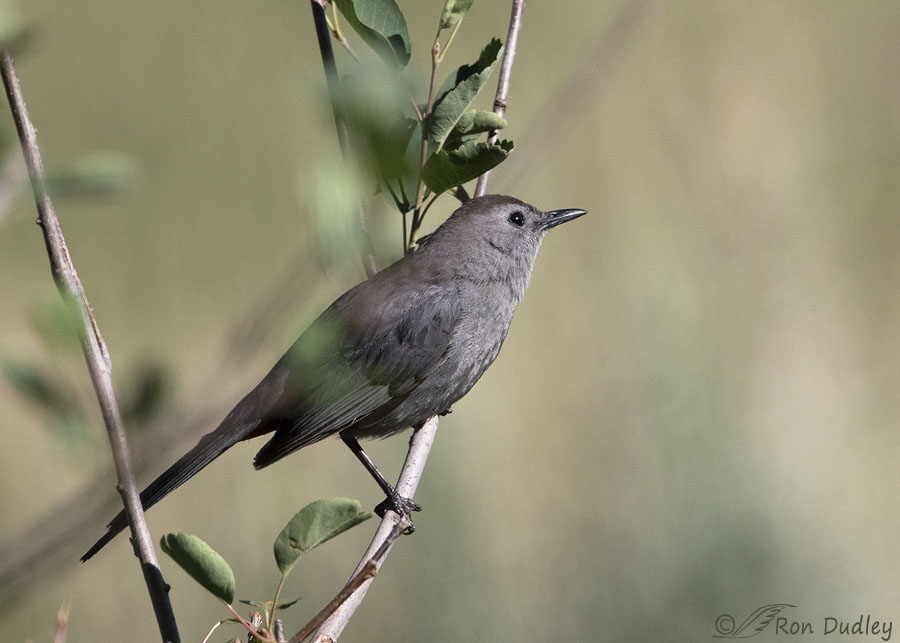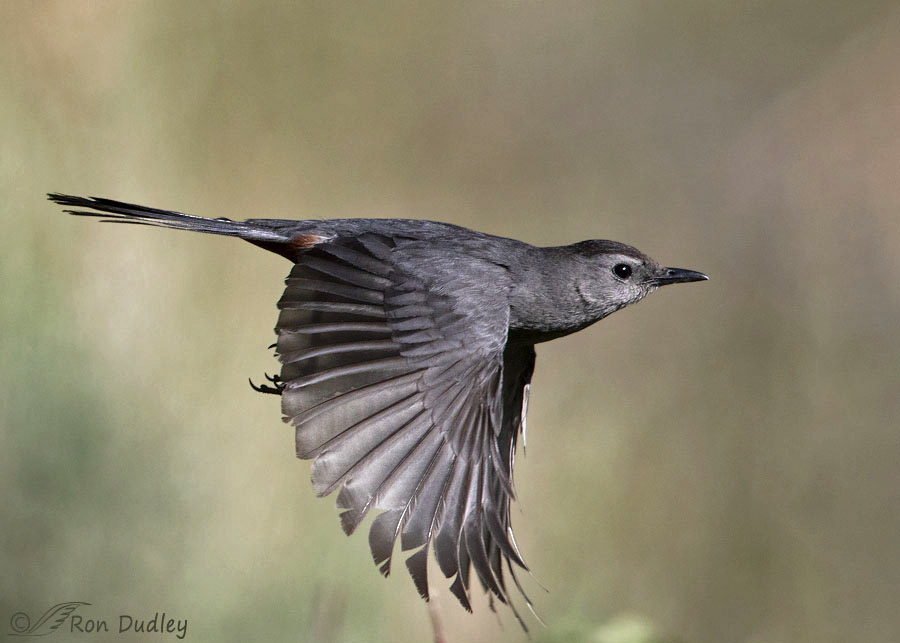Making lemonade out of a lemon, it’s a tired old cliché but sometimes it works.

1/5000, f/6.3, ISO 800, Canon 7D Mark II, Canon EF 500mm f/4L IS II USM + EF 1.4 III Extender, not baited, set up or called in
Two days ago in the mountains there was so much vegetation between me and this Gray Catbird I could barely focus on his head, even while using a single active focus point. As a result I’d gain focus and then I’d lose it. I knew that any photos I took of ‘him’ while he was perched wouldn’t be worth the pixels they were written with, either because they’d be soft or because there was so much vegetation between me and the bird. Or both. Heck, I couldn’t even get a decent head turn out of the bird. Nothing was going right.
But you know me, I’d rather have the takeoff or flight shot anyway so when I was finally able to focus on his head again I took my finger off of the back-button AF button, composed to give him extra room on the right and hoped he’d take off in the same plane as he was perched.
My chances of success were slim but they were there.

1/5000, f/6.3, ISO 800, Canon 7D Mark II, Canon EF 500mm f/4L IS II USM + EF 1.4 III Extender, canvas added for composition
And this time my strategy worked.
He’s sharp, I captured a wing position I like and even though I almost clipped a wingtip I kept him in frame. I had to add a little extra canvas on the right to provide a composition that works for me but I still consider the image a success.
And it was excellent practice to boot.
Ron


Wow! I love this one and it’s a great bird photography lesson as well. I find that I don’t plan ahead like that and so I often miss the shot. I should start using more “strategy” when I shoot. Thanks for including your train of thought while you were taking this photo.
Joanne, I appreciate what you said in your comment very much. It’s largely for readers like you that I write posts like this one.
Wonderful. Again.
Thanks, EC.
Ron, you really nailed it. This past week all my nice sharp photos of an Orchard Oriole had those same out-of-focus leaves obscuring different parts of its anatomy.
It’s frustrating isn’t it, Kenneth. It happened again this morning multiple times, and yup – with catbirds.
Could it even be possible to get a better shot than the second frame???
Thanks, Patty. Yup, it’s very possible.
The take off photo seemed like a perfect opportunity to compare it with Sibley’s illustration of passerine wing feathers in flight (2nd ed., pg. xix). Yep, I can see all eight groups. Although the feather tips look much neater in Sibley;) Nicely done. Thanks to you and the Cowbird for the lesson.
Thanks, Lyle. Sibley usually does a better job with his paintings than I do with my photos. But I’m sure glad I’m photographing birds instead of trying to paint them.
Beautiful – that old cliche, If at first you don’t succeed, try try again — and the history of your photos is filled with your efforts to continue on even when success does not like it will come
My father used to say, “If your try your hardest, but don’t succeed, suck eggs!z”
Whatever works…
I try, Everett. I do try.
YES! Absolutely a success in my opinion……. Even caught a bit of the rusty rump. Always something to learn with the subject/equipment/human when it comes to photography.
Even caught a bit of the rusty rump. Always something to learn with the subject/equipment/human when it comes to photography. 
Thanks, Judy. That reddish rump always catches my eye on those occasions I can see it, which isn’t all that often.